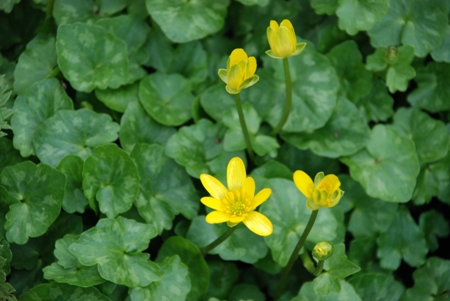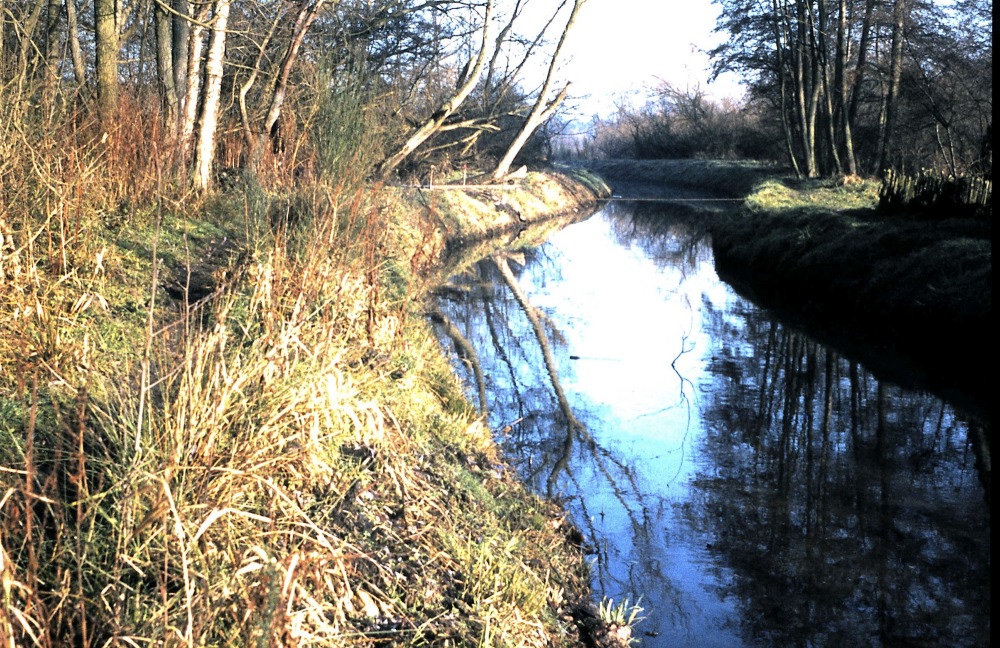
Michelle Salter writes:
As you cross Brookly Bridge, the yellow flowers of Lesser Celandine (Ranunculus ficaria) are currently bringing some welcome colour to the banks of the stream. A member of the buttercup family, Lesser Celandine is one of the earliest spring wildflowers to appear and provides nectar and pollen for bees emerging from hibernation. Visible only when in bloom from March to May; Lesser Celandine dies back completely after flowering.

The photo above shows Brookly Stream before the bridge was erected in 1977 (you can just make out a thin plank laid across the water to allow the team of volunteers, preparing to install the new bridge, to reach the opposite bank). If you compare it to the picture below, look at the difference in the width of the stream and the lack of mud banks in the older photo. The celandine seed, brought down by the stream, has grown up along the banks of the deposited silt.

The yellow flowers of Gorse (Ulex europaeus), a traditional heathland plant, can also be seen coming to life all around the pond, in particular on the Dry Heath and at Sandy Bay. A member of the pea family, the bright golden flowers of gorse have a gentle coconut fragrance and provide nectar for early emerging Brimstone butterflies.

Photo credits: Michelle Salter
Brookly Steam 1977 photograph courtesy of Colin Gray.

1 thoughts on “March Wildflower Watch – Lesser Celandine and the Brookly Stream”